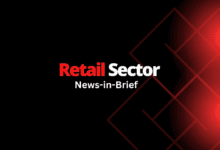How UK retailers can choose the right supplier
By thoroughly understanding business needs, evaluating potential providers carefully, and following a structured selection process, retailers can find a partner that enhances their operational efficiency and customer satisfaction

In the highly competitive UK retail market, the choice of a delivery or supply provider is critical for ensuring customer satisfaction and operational efficiency. Selecting the right partner involves a detailed evaluation of various factors to ensure alignment with your business goals and customer expectations.
Here’s a comprehensive guide for UK retailers on how to pick the right supply provider, considering benefits, drawbacks, potential pitfalls, and essential steps in the selection process.
Understanding needs and objectives
Before embarking on the search for a delivery or supply provider, it is essential to have a clear understanding of the retailer’s business needs and objectives. First, assess the delivery volumes to determine the average number of deliveries handled on a daily, weekly, and monthly basis.
This understanding will help in selecting a provider capable of managing the demands without compromising service quality. Additionally, it is crucial to define the service level expectations, including delivery times, packaging standards, and the handling of special items.
Establishing these expectations ensures that potential providers can meet the specific requirements of the customer base.
Finally, it’s important to identify any budget constraints by setting a realistic budget for the retailer’s delivery operations. While cost is a significant factor, it should not compromise service quality and reliability.
Evaluating potential providers
Once the needs are defined, the next step is to evaluate potential providers based on several key considerations.
Reliability and reputation are paramount: look for providers with a proven track record of reliability. This can be done by checking reviews, testimonials, and case studies.
A provider with a solid reputation is likely to be more dependable. Additionally, ensure the provider covers all the regions the retailer serves. For retailers with nationwide or international customers, a provider with extensive coverage is essential.
Technology integration is another critical factor. Modern logistics heavily rely on technology, so choose providers that offer advanced tracking systems, real-time updates, and seamless integration with your existing systems.
Scalability is equally important – as the business grows, the delivery needs will change, so opt for a provider that can scale their services according to the retailer’s evolving requirements.
Lastly, the quality of a provider’s customer service can significantly impact operations. Providers should be responsive and capable of resolving issues quickly.
Benefits and drawbacks
Understanding the benefits and drawbacks of potential providers is crucial for making an informed decision.
One of the primary benefits of choosing the right delivery provider is improved efficiency. A reliable provider can streamline logistics, leading to faster and more accurate deliveries.
This efficiency directly translates to enhanced customer satisfaction, as prompt and reliable delivery services significantly improve customer loyalty.
Additionally, efficient providers can help reduce delivery costs through better route planning and bulk shipping discounts. By outsourcing delivery, retailers can focus more on core business activities such as marketing, product development, and customer service.
However, there are also potential drawbacks to consider. Relying on an external provider means the retailer has less control over the delivery process, which can lead to issues if the provider does not meet the standards.
Furthermore, external factors affecting the provider can lead to service disruptions, impacting operations. Initial integration costs can also be a concern: integrating the retailer’s systems with the provider’s technology may involve setup costs and time.
Red flags to watch out for
When evaluating providers, there are several red flags to watch out for.
Inconsistent communication is a significant concern – poor communication can lead to misunderstandings and operational disruptions. It’s essential to ensure that the provider is responsive and transparent.
Be wary of providers with unclear pricing structures, as hidden costs can lead to budget overruns. It is also important to ensure all costs are transparent and accounted for in the budget.
Consistently negative feedback from other businesses can be a warning sign, so research thoroughly and consider feedback from multiple sources.
Finally, a provider that cannot adapt to the retailer’s specific needs or scale may not be a good long-term partner.
Steps to take in the selection process
Following a structured approach in selecting a delivery provider can help ensure a good fit for the retailer’s business needs.
Start by creating a shortlist of potential providers based on your initial research, ensuring they meet your basic requirements. Contact the shortlisted providers and request detailed proposals, which should include information on services offered, pricing, technology, and references.
It would be a good idea to also conduct interviews with representatives from each provider to get a deeper understanding of their capabilities and to address any specific concerns.
Speaking with other businesses that use the provider’s services is crucial to get an unbiased perspective on their performance. If possible, conduct a trial run with the provider to evaluate their service quality, reliability, and customer support in real-time.
Once you’ve selected a provider, negotiate terms that are favourable to your business, ensuring the contract includes clear service level agreements (SLAs), pricing structures, and exit clauses.
After selecting a provider, continuously monitor their performance to ensure they meet your expectations. Regular reviews and feedback sessions can help address any issues promptly.
By thoroughly understanding business needs, evaluating potential providers carefully, and following a structured selection process, retailers can find a partner that enhances their operational efficiency and customer satisfaction. The right provider not only meets current needs but is also capable of scaling with the business as it grows.



